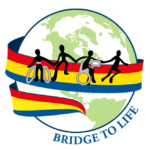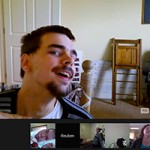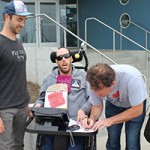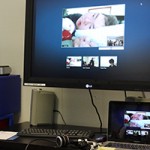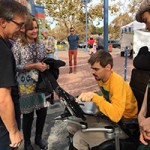Everyone has a voice within the BCTAC community. As such, BCTAC works within a cooperative model where all individuals contribute to the best of their ability and in their own area of interest. All of these efforts contribute to the general workings of the group. This is our definition of teamwork!
Co-ops are based on values such as self-responsibility, democracy, equality, honesty and social responsibility. BCTAC is a reflection of its members.
- Definition of Cooperative: A farm, business, or other organization that is owned and run jointly by its members, who share the profits or benefits.
- Definition of Cooperation: Working together towards the same goal and joining forces to accomplish a task that one can’t achieve alone.
Basic Principles
Voluntary and Open Membership
It is a choice to be a part of this group.
Teamwork
Members work together to achieve the mission and vision of the group.
Democratic Member Control/Member Participation
All members contribute to make sure that the group continues and evolves. Members ensure that the group and its activities reflect the BCTAC community.
Time Contribution
Members use their voice to be a part of the collective. Members contribute a minimum of 10 hours total over the course of the year to the cooperative (e.g., share thoughts and ideas via Google docs, attend activities, participate in fundraising, volunteer service towards an activity or event).
Effective Communication
Members contribute thoughts and ideas, plan with others on Google documents, stay in contact with other members, check the Google calendar for upcoming events and activities, update the group on special events, deliver information to the leadership committee in time for due dates or requests from the committee regarding information, etc.
Education, Support/Training and Dissemination
Members educate the public, provide support and training to others who would like to know more about AAC and share with the public information about themselves and the group.
Concern for Community
Members are similar people with different stories. Members create and foster a community where they encourage, support and learn from one another. In addition, members also have a concern for the surrounding communities in which they live.
Economic Participation
Members assist the group in achieving fundraising goals, collecting donations, etc. The goal of the group is NOT to raise money, but we do want to have money for some of the really fun things we do (e.g., Retreat, buying BCTAC swag, going to Giants games, etc.).
Participation and Engagement
- The BCTAC community extends beyond the Bay Area and California. Members meet online via video chat.
- Fundraising is one of the many components BCTAC members enjoy. Ben and Clay sell raffle tickets for the Bowl-A-Thon.
- Out-of-town members lead and participate in activities. Patrick leads the group and shares information about the day’s activity.
- Members contribute time, skills, positive attitudes and cool factor. Reuben interviews Bridge School Benefit concert-goers.
Sharing skills and special talents is a way that all BCTAC members can contribute. Below is a general list of contributions.
Leadership
- Join the leadership committee which is supported by the Co-Presidents of BCTAC
- Plan activities and events under the direction of the Coordinator of Activities and Events (e.g., reserve tickets or a room, call to get information, keep records, track attendance/RSVPs)
- Introduce and/or lead activities
- Recruit new BCTAC members
Events & Planning
- Contribute activity ideas/suggestions
- Visit locations for activities and report information about them to the group (e.g., accessibility, noise level, access to supports the group might need during the time at the location)
- Maintain a Google Calendar and personal email – stay connected regarding dates and important notices
- Contribute and collaborate with the group on Google Docs
- Plan and execute elements of events (e.g., food, decorations, invitations)
- Participate in The Bridge School Benefit Concert activities
- Coordinate emergency preparedness at all events (e.g., exit route, first aid, emergency supplies)
- Create routes/maps for activities
- Develop and coordinate elements of the BCTAC Retreat
- Conduct online research (e.g., researching cost of goods, exploring venues, etc.)
- Participate in the BCTAC activities!
Social Engagement
- Create Facebook postings; caption Facebook images (e.g., share our latest activity)
- Create website content for BCTAC‘s page on The Bridge School’s website
- Communicate with members of the group regarding upcoming activities, updates, etc.
- Prepare/Create fliers for activities and invites to events
- Create and/or contribute to group presentations
- Engage and socialize with others at BCTAC events
Finance/Budget
- Maintain and coordinate the BCTAC budget; provide quarterly updates to the group
- Maintain BCTAC merchandise and inventory
- Solicit donors and contributions (e.g., contact businesses, organizations, community members to donate goods and/or services)

